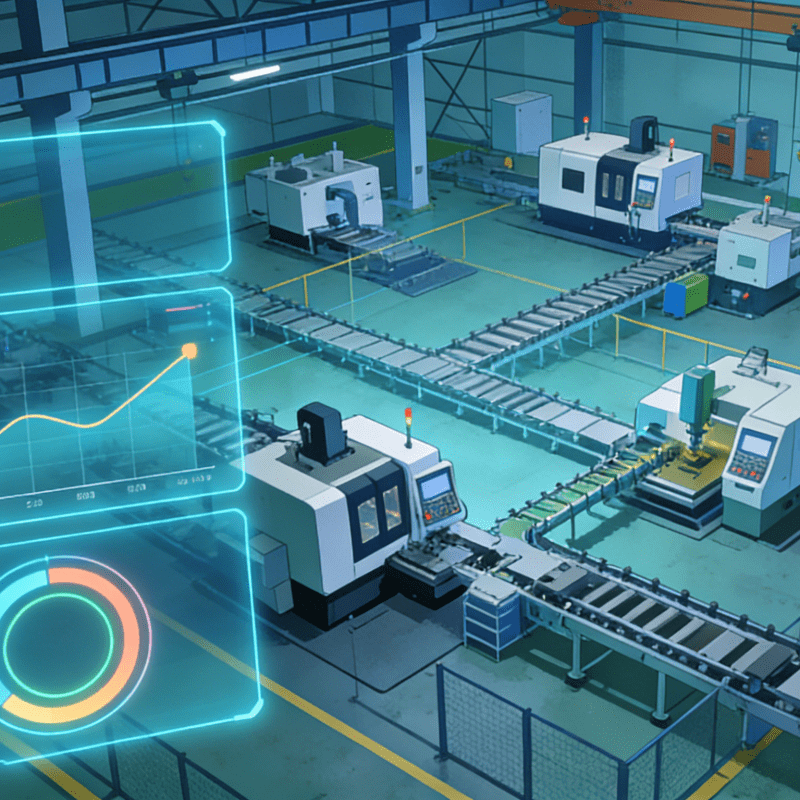
Intelligent cloud and artificial intelligence (AI) solutions help enterprises break through the limitations of automation, enabling intelligent systems to listen, learn, and act, thereby creating significant value in various fields such as healthcare, finance, manufacturing, and daily life.
Modern technological innovation has gone beyond the boundaries of core automation. Today, people expect systems to have built-in intelligence that can independently learn, adapt, and make decisions. For example, voice-activated assistants, advanced cameras that can identify abnormal behaviors, and medical procedures that can recommend alternative treatment plans are all typical representatives of intelligent systems.
The core building blocks of these systems are two transformative technologies: artificial intelligence and cloud computing. Artificial intelligence endows systems with the ability to learn and evolve, similar to the development process of the human brain; cloud computing provides infrastructure support for their global deployment and operation. The synergy between the two helps enterprises achieve more complex, context-sensitive, and personalized business experiences while improving operational efficiency.
Characteristics of Cognitive Computing Systems
Cognitive computing systems perform tasks that go beyond simply fulfilling predetermined protocols. They collect information, analyze it, draw conclusions, apply logic, and continuously improve their methods. Their main characteristics include the following:
Data Collection: The system collects various forms of information, such as verbal instructions, electronic messages, user content, and sensor outputs. Based on a given framework, cloud computing systems provide infrastructure for the storage and maintenance of massive amounts of information.
Data Understanding: After information is collected, it enters the processing stage, where the system performs operations such as cleaning, structuring, and analyzing it. For example, understanding the user instruction “play music” as a need to play a piece of music.
Impact of Research Results: Artificial intelligence enhances the ability to identify patterns in historical information, such as personal music preferences or the intervals at which users reconfigure thermostats. This enables the system’s decision-making process to be based on higher-quality information, leading to better decisions.
Decision-Making Process: The system determines subsequent actions based on predetermined logical rules or learned behavioral patterns, such as recommending movies, placing orders, or sending notifications.
Meeting User Expectations: The system generates responses in the form of voice, text, or custom operations, and personalizes them based on the user information it has learned.
The Importance of Cloud Computing
Without cloud computing, intelligent systems would struggle to operate efficiently on a large scale. The importance of cloud computing is reflected in the following aspects:
Prilagodljivost: Cloud infrastructure can flexibly expand system resources according to changes in demand, meeting the resource needs when multiple users access simultaneously.
Speed: The wide distribution of cloud data centers enhances operational capabilities, enabling immediate and consistent responses to various requests.
Storage: Cloud platforms can store massive amounts of data, providing necessary support for training AI systems. Cloud services are hosted in multiple locations around the world and can be accessed through various devices.
Maintenance: Server updates and maintenance are the responsibility of cloud service providers, so developers do not need to undertake related tasks.
How Artificial Intelligence Drives Intelligence
Artificial intelligence improves system performance and optimizes operational results by enhancing reasoning, learning, and optimization capabilities. Its common uses include:
Experiential Learning: Over time, AI algorithms continuously improve their performance as they absorb more data.
Language Understanding: Natural Language Processing (NLP) enables systems to understand and respond to inputs in the form of human language.
Visual and Auditory Recognition: AI can recognize human faces, objects, and auditory signals, etc.
Predictive Analysis: It has the ability to predict multiple possible outcomes, such as assessing the possibility of delayed shipments or determining the next product that is most likely to attract customers.
Generative Artificial Intelligence: Enables machines to generate written content, create programming languages, as well as forms of music and visual art.
Technical Analysis of Voice-Activated Assistant Technology
Take the voice assistant embedded in multiple smart speaker systems as an example. When a user asks, “What’s the weather like in Guangzhou?”, the device receives the sound waves and sends them to an external server. The cloud computing infrastructure transcribes the verbal communication into written form, understands its significance, and provides accurate meteorological information. The entire process involves the following links:
Voice Collection and Transmission: The user speaks natural language voice commands on a smart speaker or a device with a display screen. The microphone and processor in the device listen to the sound. When the preset wake word “Alexa” is heard, it starts recording the user’s command and transmits the sound file to the cloud server through a secure path for processing.
Automatic Speech Recognition (ASR): In the first-stage pipeline in the cloud, ASR converts the original audio stream into text. It needs to recognize different accents, eliminate background noise, and capture the nuances of the sound in real-time. ASR models are trained on a large number of recordings of different voices to accurately capture the spoken words and convert them into text, such as “What’s the weather like in Guangzhou?”.
Natural Language Understanding (NLU): The system enters the NLU stage to interpret the user’s intent. It not only converts speech into text but also needs to understand the intent of the query and the information or entities mentioned, such as the city “Guangzhou”. A well-trained AI model is used to understand the user’s intent to ask about the weather in “Guangzhou”, while considering word ambiguity, synonyms, and the context of the request to correctly interpret the request.
Knowledge and Reasoning: The system enters the knowledge and reasoning stage, selecting the way to access correct weather information, usually by querying authoritative external services, such as weather databases or APIs. The system applies learned algorithms or established behaviors to process the received information, for example, inferring that it is daytime in Guangzhou and constructing a response accordingly. If the user only asks “What’s the weather like?”, the system can use geographical location information or stored past preferences to infer that “Guangzhou” is the most likely location.
Natural Language Generation (NLG): The system enters the NLG stage, translating structured information into grammatically correct, readable, and human-acceptable text. For example, rewriting the original information {temperature: 27°C, condition: sunny} into “The weather in Guangzhou is 27 degrees and sunny.” The system uses correct phrases, follows grammatical requirements, and adds sentence variations in each repetition to make it as natural as possible. After that, the system uses Text-to-Speech (TTS) technology to convert the generated text into sound, creating a voice profile with friendly dialogue and clear pronunciation. The audio file is streamed over the Internet to provide the user with a clear and natural sound response, and the entire process takes only a few seconds.
Technical Foundation and Optimization: Cloud technology supports the scalability of voice assistants, managing millions of simultaneous requests from around the world. It provides the computing power required to run voice and language deep learning algorithms, query external databases, and respond in real-time, while also offering security features such as encrypted data transmission and access control to ensure the secure processing of sensitive voice information. In addition, intelligent systems improve with accumulated experience, learning from interactions with users, becoming more personalized, understanding user preferences, and proactively providing recommendations before users request them.
Summary
Intelligent cloud and artificial intelligence (AI) solutions help enterprises break through the limitations of automation, enabling intelligent systems to listen, learn, and act, creating significant value in healthcare, finance, manufacturing, daily life, and many other fields. Cloud computing provides the necessary power, flexibility, and scope for solutions, while artificial intelligence endows systems with the wisdom needed to think, learn, and optimize. The combination of the two is gradually building a more intelligent and highly interconnected global environment.
The help of artificial intelligence to atomizer assembly machines
Intelligentization of biological indicator assembly machines




















